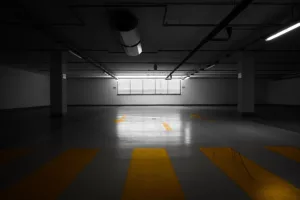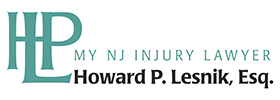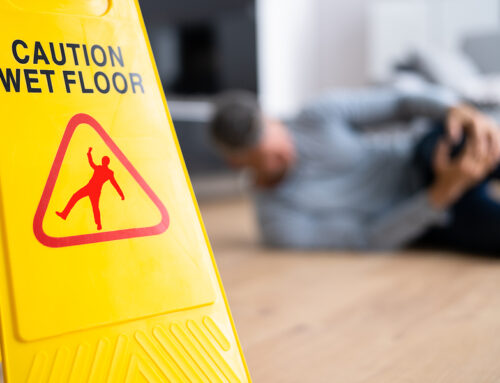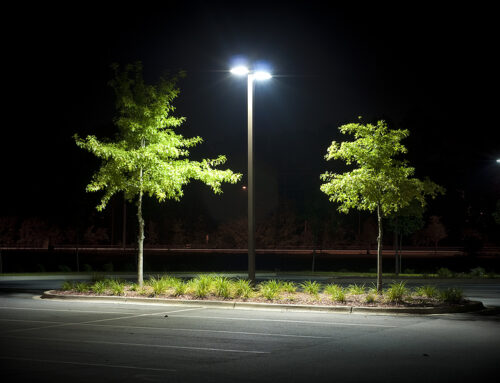Property owners, whether commercial or residential, have a legal obligation to maintain their property in a reasonably safe condition for visitors. If the property owner is informed of the presence of a hazard, the hazard has existed for enough time that they ought to have discovered it on their own, or the hazard is expected given the nature of the property (such as ice and snow in any outdoor environment after a snowstorm), then the property owner has a duty to take action to rectify the danger. Some examples of hazardous property conditions – such as the aforementioned ice and snow – come to mind quite readily, but others are not so obvious. Light levels may not be the first thought that springs forward when one thinks of property hazards, but inadequate lighting can create a number of dangers for patrons.
 The most obvious danger from inadequate lighting is that it conceals other hazards. Broken paving tiles, debris in the walkway, and icy patches all dramatically increase in threat level when they are hidden by darkness. Poor lighting removes any warning that a visitor might have had of these obstacles, and the chance that they will trip or slip and fall, risking serious injury, becomes much more likely. Inadequate lighting also creates tripping hazards out of perfectly well-maintained grounds. A curb or staircase in good repair is unlikely to give the average person any trouble in broad daylight, but poor lighting conditions conceal these features and take away a visitor’s ability to predict the change in elevation. Suddenly that “perfectly safe” curb has become an almost guaranteed tripping hazard.
The most obvious danger from inadequate lighting is that it conceals other hazards. Broken paving tiles, debris in the walkway, and icy patches all dramatically increase in threat level when they are hidden by darkness. Poor lighting removes any warning that a visitor might have had of these obstacles, and the chance that they will trip or slip and fall, risking serious injury, becomes much more likely. Inadequate lighting also creates tripping hazards out of perfectly well-maintained grounds. A curb or staircase in good repair is unlikely to give the average person any trouble in broad daylight, but poor lighting conditions conceal these features and take away a visitor’s ability to predict the change in elevation. Suddenly that “perfectly safe” curb has become an almost guaranteed tripping hazard.
Worse still, in many neighborhoods a lack of appropriate lighting can provide greater opportunity for criminal activity. Darkness both conceals the identity of the criminal and allows them a better position to ambush their victims. Inadequate lighting in parking lots and other isolated public areas can result in an increased incidence of carjackings, robberies and muggings, and different types of assault.
In cases where criminal activity is the source of injury damages, the property owner is likely to try to argue that they aren’t at fault, since they have no control of the actions of criminals. However, poor lighting creates opportunity for criminals that would not exist if a safe level of illumination was maintained. Even if a robber or assailant were to try to prey on patrons in a well-lit parking lot, the would-be victim would be able to spot the criminal from much farther away and call for help or flee to a safer, more populated area. Darkness is a hazard, as indisputable as water on a linoleum floor or ice on the front steps of a building. If a property owner has allowed inadequate lighting conditions to persist, whether by failing to install appropriate lighting devices or by neglecting to repair broken or burned-out lights within a reasonable span of time, then that property owner is neglecting their duty of care to maintain their property in a safe condition for visitors. If you suffer an injury as a result of that negligence, you have every right to seek compensation for that injury.
The type of compensation in question depends, of course, on the kind of injuries you suffered. If the inadequate lighting conditions caused you to trip and fall, then your injuries are likely similar to those most frequently caused by slipping or tripping accidents: bone fractures and torn ligaments, injuries to the back, neck, or spine, and traumatic brain injury (TBI). The damages you can expect depend on the nature and severity of your injuries, any lost wages from the time you were unable to work, and whether any lasting disability or permanent injury resulted.
If you suffered injuries from a criminal attack that happened in a poorly lit area, you may have experienced injury beyond the physical damage inflicted on your body. Any sort of deliberate, violent attack by another person is traumatic, and can leave a lasting psychological impact on the victim. While the effects of trauma are as diverse and unique as the people who suffer it, it would not be uncommon for the victim of such an attack to feel vulnerable and violated, and they might struggle with feeling safe going to similar locations, even in daylight. Recovery from the emotional trauma inflicted by a criminal attack is sometimes a lengthy process involving psychological treatment, and that’s in addition to the medical care needed for the victim’s bodily injuries.
It’s clear that a property owner’s failure to install and maintain adequate lighting can have a devastating impact on the lives of unsuspecting visitors to the property, who may not even realize a problem exists if they enter a building in daylight and emerge after dark. If you’ve suffered an injury that a lack of sufficient lighting helped to cause, you have the right to hold the property owner responsible for their negligence, with the help of an experienced premises liability attorney.
Contact MyNJInjuryLawyer Howard P. Lesnik
If you or a loved one suffered an injury in an accident in NJ, you should contact an attorney familiar with handling these claims. An experienced NJ Injury Lawyer will know how to obtain medical records, videos, photographs, experts, locate witnesses and contact the insurance company so you can make a claim for your injuries.
My NJ Injury Lawyer Howard P. Lesnik, Esq. offers complimentary strategy sessions to address any issue or questions you may have for your injury claim in NJ.
Please contact NJ Injury Lawyer Howard Lesnik, Esq., immediately if you were involved in an accident. I personally handle NJ personal injury cases on a regular basis. Please contact me now by email, by phoning 908.264.7701, or by completing the form to the right to schedule your complimentary 30-minute strategy session. Call me direct and I will answer 5 questions that you have about your potential claim.





